Thailand’s Drag Shows: Testimony to Survival and Culture Redefined
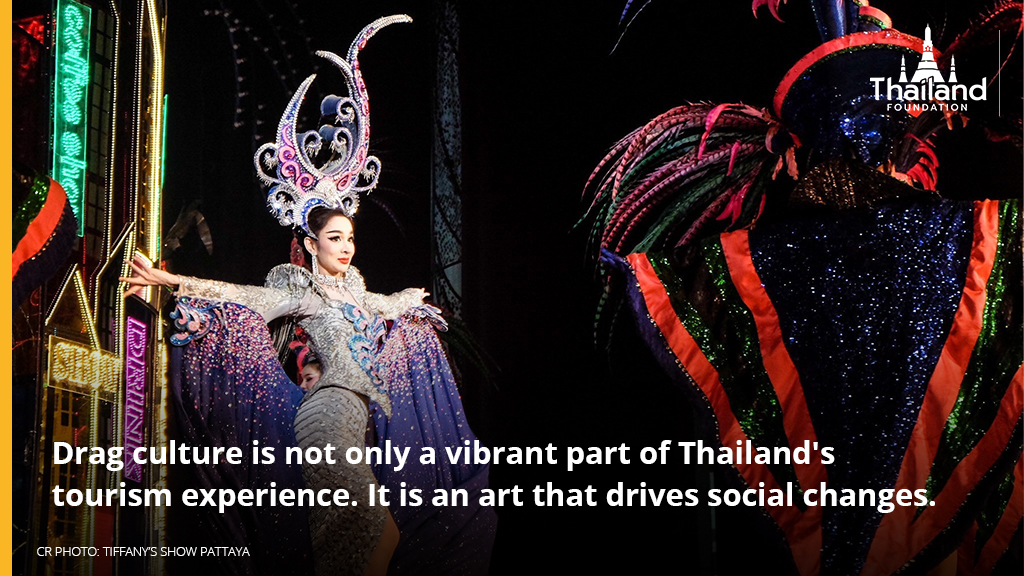
The world may know of “drag” through RuPaul’s Drag Race and the legendary Harlem Drag Balls, but in Thailand we have our own vibrant drag culture. There are fierce drag queens slaying the floor as well as the unique kathoey (trans women) cabaret shows that not only attract tourists from the world over but also manifest the will to survival of LGBTQ+ people in the country. Where did drag in Thailand come from? How did the will to survival transform itself into one of the most vivid, most lively and unique allure you will find in the country? Let’s get into that.
History of Thai Cabaret Shows
Even though Thailand has been constantly evolving into a better place for LGBTQ+ people, lives haven’t been easy for them. Members of the LGBTQ+ community especially those who openly defy gender norms in the way they dress, talk, and behave may still face challenges in life. Some trans women in Thailand are unable to find work in the formal job sector so they resort to do other informal jobs, and this has led to many of them being in the entertainment industry.
Back in 1956 Thailand had decriminalized a law enacted in 1909 which punished homosexual acts, after that more LGBTQ+ people had come out, and more spaces such as gay clubs and bars were opened. The decriminalization coincided with the 1st National Economic Development Plan of Thailand in 1961 along with the plan to develop Pattaya as Thailand’s tourism destination. There came Thailand’s first cabaret show.
It has been more than 45 years since the inception of Thailand first cabaret show which reshaped Thailand’s cultural tourism. Back in 1974, an owner of a gay bar in Bangkok went to see a drag show (a show of people who put on clothes and makeup that emphasize and amplify their gender expression) by the drag crew from the Philippines who came to perform in Bangkok. Imagine how inspired the owner of the gay bar was! He went back and designed a drag show that was one of a kind, the one where he coalesced between drag show and that of a cabaret! That was when Thailand’s first drag show was born, at the Tulip Bar in Bangkok.
Later on, the owner of Tulip Bar expanded his business to Pattaya, Thailand’s renowned tourism destination, there he opened the ‘Tiffany Bar’ where the unique cabaret shows were growing and constantly attracting attention from tourists around the world. At first the shows were only on the weekends, and those who performed were not professionals, but with growing attention, in 2000 the owner moved to a bigger theatre which can accommodate up to 1,000-1,200 seats, and being a drag performer had become a profession for several trans women in Thailand. And the kathoey cabaret shows spread to various tourism destinations in Thailand ever since. In theatre, clubs, bars, expect to find yourself visiting drag shows when you come to Thailand!
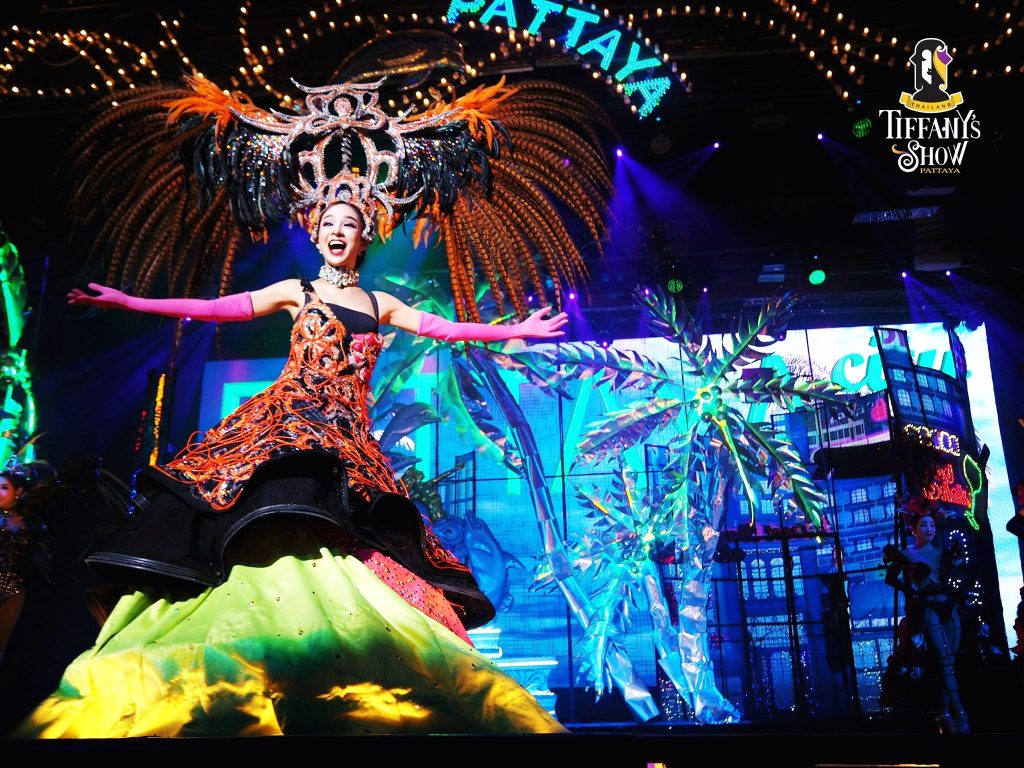
(Photo credit: https://www.hotels2thailand.com/pattaya-show-event/tiffany-show-pattaya.asp)
Cabaret and Drag: Differences and Connection
Drag and cabaret shows share many similarities. They both involve makeup, costume, dancing, and most-importantly lip-syncing. Some, however, draw distinctions between the “show-biz” style of cabaret performances and the more Western-based style of drag. Nonetheless, many modern drag queens in Thailand, both cisgender and trans, respect and feel a connection with cabaret show performers. After all, it was through cabaret performances that drag culture became recognized in the country. And it was through queer and trans cabaret performers that new generations became inspired to pursue the art. Thus, one thing is certain: whether it’s cabaret show or “drag proper”, the art of the performance in Thailand is open to all individuals, whether they are cisgender, queer, or trans.
Modern Thai Drag Shows: In the Bars, and On Television
Merely in Pattaya there were around two million visitors per year to drag/cabaret shows but the number has dwindled greatly due to the pandemic. Still, the drag show culture continues to rise on television and gain a more mainstream audience. In 2018, Thailand’s first ever drag show competition, Drag Race Thailand, premiered on television. The competition was fierce and lively.
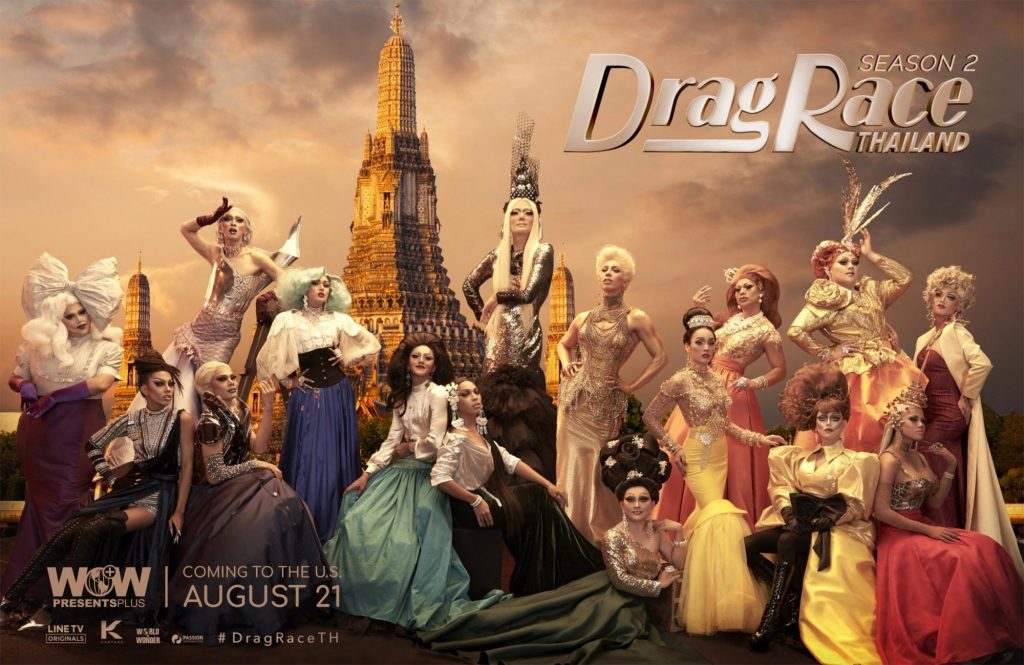
(Photo credit: https://ew.com/tv/2019/08/09/drag-race-thailand-season-2-us-premiere-date/)
“Hello, my name is Natalia Pliacam. I come from Chinatown, Yaowarat, Bangkok, Thailand!” was the entrance quote of Natalia Pliacam, the first winner of Drag Race Thailand. And you wouldn’t imagine her walk of life as a coffin seller! The stark contrast between the two: the liveliness and humor of Natalia Pliacam and the occupation that ties closely with sadness and grief, is striking. Perhaps this is the creativity and the means of survival of a drag queen: a creative way to live life in the world of binary gender norm. It is also a sentiment to the openness of Thai drag society, where even a coffin seller can become a queen.
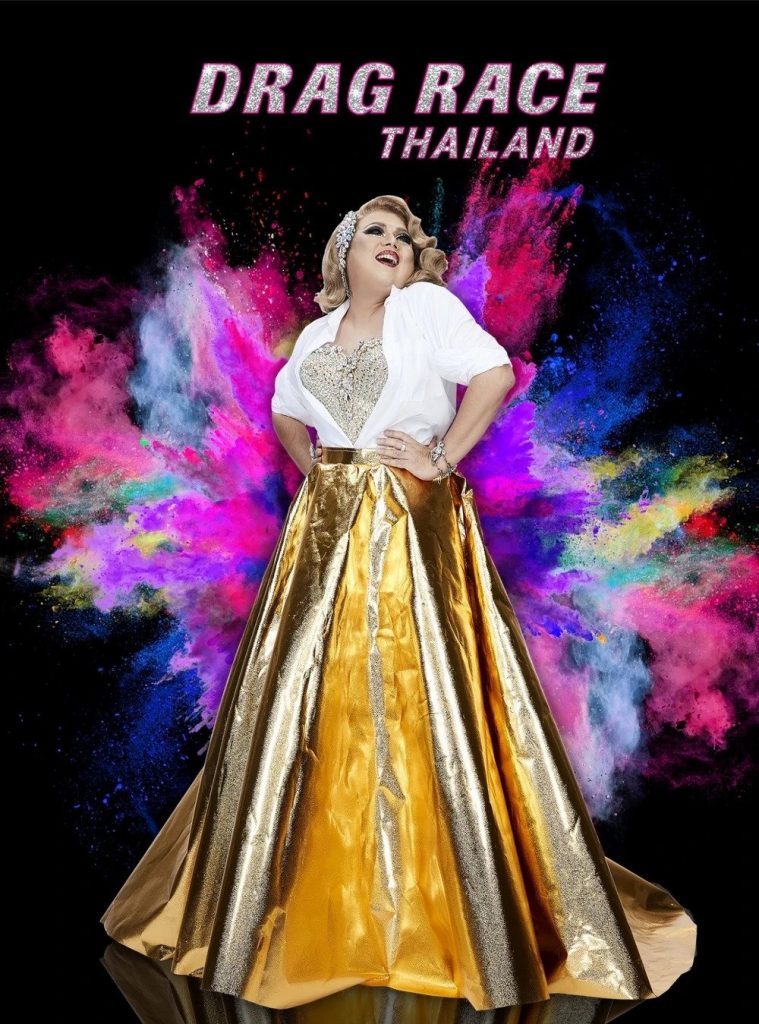
(Photo credit: https://rupaulsdragrace.fandom.com/wiki/Natalia_Pliacam)
And the season two of Drag Race Thailand did not stop setting the record. Angele Anang, winner of the second season is not only Thailand’s first trans woman to win the competition in Thailand but the first in the world! Prior to Drag Race Thailand season two, never had a trans woman won in the Drag Race franchise before. Angele Anang, the proud drag queen of Thailand, has paved the way for trans women in the Drag Race competition across the world.

(Photo credit: https://thailandinsider.com/exclusive-interview-with-angele-anang/)
Last, but certainly not least, Thailand was represented by Pangina Heals in RuPaul’s Drag Race UK Vs the World. People often call her the “RuPaul of Thailand” and she has been described as one of Asia’s most popular drag queens.
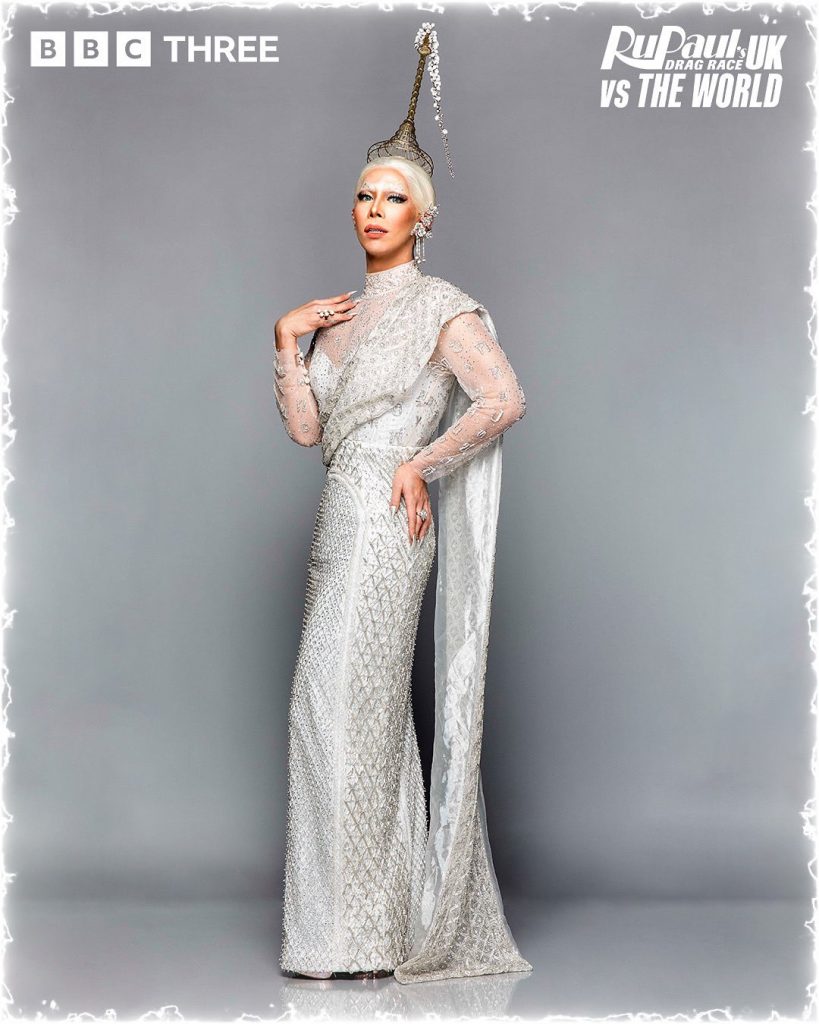
(Photo credit: https://mobile.twitter.com/panginaheals/status/1489063429143166976 )
All these drag queens and their skyrocketing popularity may make you wonder: what is it about the drag queens and cabaret shows in Thailand that make them so popular?
The Uniqueness of Drag Queens and Cabaret Shows in Thailand
In a cabaret show, performers often wear gigantic dresses that exaggerate their bodies. The dresses are decorated with shiny elements, emphasized by feather headbands or tiaras. For the cabaret shows in Thailand, performers often adapt elements from the Thai culture into their dresses and shows, the shows consist of lip-syncing performances, comedy, and dances. For instance, cabaret/drag shows in Chiangmai often combine the performances with mountainous culture and northern folk songs. Most of cabaret performers in Thailand also adapt their gowns and dresses from traditional Thai costumes, so you can imagine how unique these drag dresses are. This tradition has carried on to Western-style drag performers, as seen in RuPaul’s Drag Race UK Vs the World, where Pangina Heals incorporated elements on Thainess into her dresses. All of this, the unique costumes, the songs, the comedy, the performers, contributes to the unique charm of Thai cabaret and drag performances.
Towards the Future of Openness
Thailand openness towards the LGBTQ+ community has certainly contributed to the popularity of drag performances. LGBTQ+ individuals in the country, however, still have to fight against challenges, and we can say that cabaret and drag show are part and parcel of that fight. Performances have helped shed light onto the presence of the LGBTQ+ community, creating better understanding and acceptance within society. Moreover, cabaret performances and drag shows has played an important part in Thailand’s tourism industry. They have garnered attention and captivated tourists to Thailand. But the COVID-19 pandemic takes a toll on us all, especially performers who encounter difficulty and hardship from stagnant tourism. Still, there are hopes as Thailand eases restrictions and open her arms to travelers once again.
Despite the struggle, we see how LGBTQ+ individuals in the industry adapt the live on with dignity. Just like how the drag shows are testimony of their creativity, the drag performers and LGBTQ+ presence in Thailand will prosper just like how they light up the drag show and create laughter and enjoyment for all visitors and show us all how to live with resilience and joy. Drag shows are not only shows. They are a means and testimony of survival for LGBTQ+ people who define their own path in Thai society, becoming one of Thailand’s most recognizable faces. When you come to Thailand, make sure to make sure to come see at least a show or two and you’ll see how culture can be redefined (and defied too)!
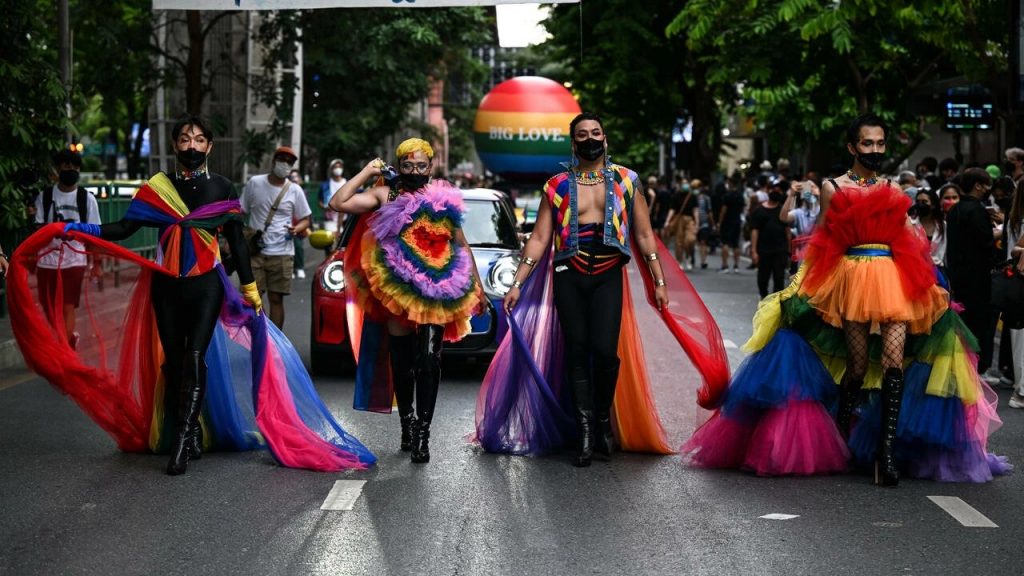
(Photo credit: https://www.france24.com/en/live-news/20220605-bangkok-celebrates-first-pride-parade-in-16-years)
Sources:
- http://www.sure.su.ac.th/xmlui/bitstream/handle/123456789/23714/BA_Pisit_Panyanantaprateep.pdf?sequence=1&isAllowed=y
- https://bit.ly/3yex4LU
- https://so06.tci-thaijo.org/index.php/Mupabuujournal/article/view/244217
- https://rupaulsdragrace.fandom.com/wiki/Angele_Anang
- https://rupaulsdragrace.fandom.com/wiki/Natalia_Pliacam
_____________________________________________________________
Author: Chertalay Suwanpanich
Editor: Tayud Mongkolrat
22 June 2022


